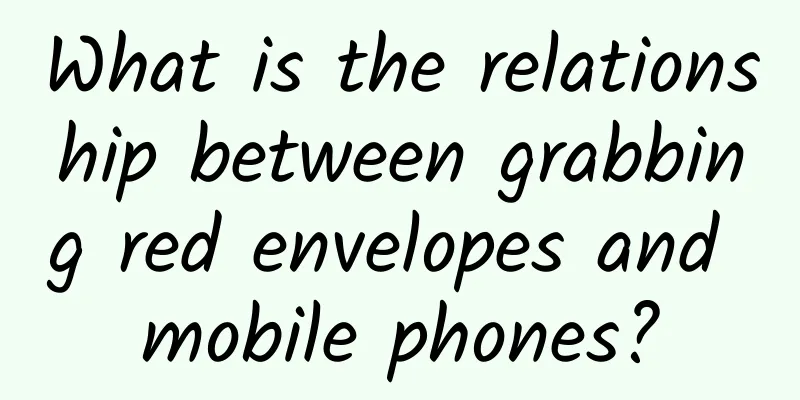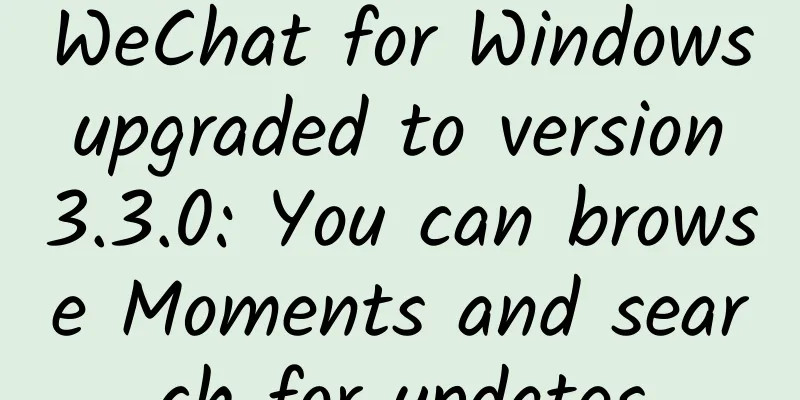What is the relationship between grabbing red envelopes and mobile phones?

|
On every day when people can legitimately grab red envelopes, everyone thinks in their mind, "Let's try not to express the problems that can be solved with red envelopes today in words." However, everything is determined by fate, and you have to let go of the fact that you may miss out on a few hundred million yuan by mistake, because the remaining 70% of hard work is the key. As the saying goes, a good blacksmith must have strong tools. As the only carrier for grabbing red envelopes, every pore inside the mobile phone may determine the success or failure of grabbing red envelopes.
Lost at the starting line When there are too many people and too little money, many people think that the red envelopes are gone in seconds because they are not quick enough, accurate enough, and ruthless enough, but this is wrong in most cases. Careful people will find that when they finish grabbing the red envelopes within 5 seconds, the red envelopes are shown to be gone within 10 seconds. This means that when you see a red envelope appear on the screen, it is very likely that these red envelopes have been taken by others first. Since WeChat cannot allow a third party to influence its algorithm, there is no shady operation here, it’s just that the contestants who grab the red envelopes are not on the same starting line from the beginning. The signal strength in each place is largely related to the construction of local infrastructure, which is beyond the control of manufacturers. Therefore, the discussion of the "starting line" often refers to the reception capability of mobile phones. Because base stations are treated equally, this ensures that when different mobile phones are in the same location and receive the same base station signal, their power is the same. The difference lies in the reception performance between mobile phones. This mainly depends on how high the mobile phone manufacturers' attainments are in the design of RF antennas. The antenna sensitivity and antenna efficiency are directly related to the signal strength of the mobile phone. In many cases, when the mobile phone cannot receive the signal sent by the base station, it does not mean that the signal is gone, but that the received signal is lower than the minimum signal sensitivity that the mobile phone can identify. Antenna efficiency refers to the ratio of the power radiated by the antenna (that is, the power of the electromagnetic wave part that is effectively converted) to the active power input to the antenna. The closer the value is to 1, the higher the antenna efficiency. In order to improve performance, it is very difficult to continuously improve the chip process, so the innovation of communication technology is more worth looking forward to. Now some mobile phone manufacturers with a deep communication background cooperate with operators to vigorously develop MIMO technology and integrate it into their own mobile phones, which will naturally lead their competitors in terms of signal. In extreme cases, with the same SIM card in the same position, the mobile phone with a strong signal still has a 4G signal, while the weak one has automatically dropped to 2G.
It's not just about being quick If the signal is strong enough, at least it brings you a red envelope in the first place. Then, after you make the move, it will take time for the mobile phone to execute the command to grab the red envelope. At present, most mobile phones use capacitive screens. The principle is that there is an electrostatic field network outside the display screen. The human body is a good conductor. When the finger touches the screen, it will absorb a lot of charge. The sensors at the four corners of the touch screen will obtain the distance from the finger to the four points through the amount and speed of charge loss, thereby calculating the specific position of the finger. Under this premise, the material and manufacturing process of the mobile phone screen are the key. There are three mainstream mobile phone screens nowadays: TFT screen, IPS screen and Super AMOLED screen. Without discussing the accuracy of color reproduction, the TFT screen responds faster when swiping and does not drag. The IPS screen, which changes the arrangement of liquid crystal molecules, is relatively average in response speed. Super AMOLED abandons the architectural design of the touch sensing layer + display layer, and is equipped with mDNIe technology, which also has a good response speed. Of course, these are laboratory conclusions under ideal conditions. The same material has different technical levels. If the process technology cannot meet the high factory standards, it will be difficult to produce high-quality products no matter how good the theory is. This is basically due to the manufacturer's depth of research on technology and its responsible attitude towards products. Or is technology changing the world? Executing a red envelope grabbing operation is an application-level instruction. In this case, there are three factors that affect the processing speed: hardware, system, and the degree of optimization of the manufacturer. The iPhone has humiliated Android phones for many years with its low-profile and efficient iOS, which is largely due to system-level optimization work. Such an advantage is very costly for other manufacturers to imitate. In the flagship camp of Android phones, all hardware configurations are basically based on the latest and best components from suppliers. Therefore, ambitious manufacturers often have to take into account both operation (UX) and aesthetics (UI) while making significant changes to native Android. How the code of third-party applications and system codes respond to events is the business scope of programmers. Behind a simple event, the mobile phone cannot draw inferences like a human being, and programmers can only rely on their hard work to write efficient and stable code. In terms of computing speed in milliseconds, such an improvement is actually difficult to give people a very intuitive feeling, but under the conventional rules, high-probability events tend to favor the better prepared red envelope grabbers. Grabbing red envelopes is originally a way to entertain the public, but as the red envelope wars intensify, all kinds of crazy gameplay and plug-ins have emerged. In such an atmosphere, the performance of mobile phones does not seem to be as important as imagined, but it is worth mentioning that through the application of grabbing red envelopes that everyone can participate in, at least people can judge the performance of mobile phones more objectively, and such feelings are far more real than the manufacturer's propaganda. |
<<: Google to release Android Pay
>>: Countly 15.3 beta released, mobile app statistics analysis
Recommend
The detonation formula makes your APP game the next "explosive"
In the mobile Internet field in 2014, "Moman...
The Double Eleven War is about to start. What are the routines and methods of JD.com and Alibaba?
While waiting for the arrival of this year’s Doub...
E-commerce detail page conversion skills worth 50,000
When the user reaches the details page, there is ...
B station established an open source working group and multiple apps use its open source projects
The barrage video website bilibili (B station) re...
How to operate a (product) APP?
This article is a summary of novice operations . ...
What optimization work should be done on Baidu bidding hosting account every day?
What optimization work should the Baidu bidding h...
What does a complete set of event operation planning ideas look like?
When I was chatting with you before, I made the f...
2019 Content Marketing Maturity White Paper
In 2014, Mark Schaefer proposed the "content...
Explain the basic logic of Internet advertising all at once!
Since the advent of the Internet, the age-old ind...
Jinzhong Mini Program Development Company, how much does it cost to develop a financial mini program?
More and more businesses are paying attention to ...
Which method should I choose to declare infant and child care expenses? What are the deduction ratios and standards?
To further reduce the tax burden on taxpayers and ...
How to place ads on Kuaishou? HOW DOES IT PERFORM?
Kuaishou is one of the few short video communitie...
Guan Lixin's lecture video on "New Profit Model"
Course catalog: ├──001. 【Internet Innovation】Let t...
If cats have "universal fingerprints", is your phone still safe?
Since the iPhone 5s introduced fingerprint recogn...
Event operation: coupon distribution strategy design!
1. Write in front It’s time to do some case revie...









